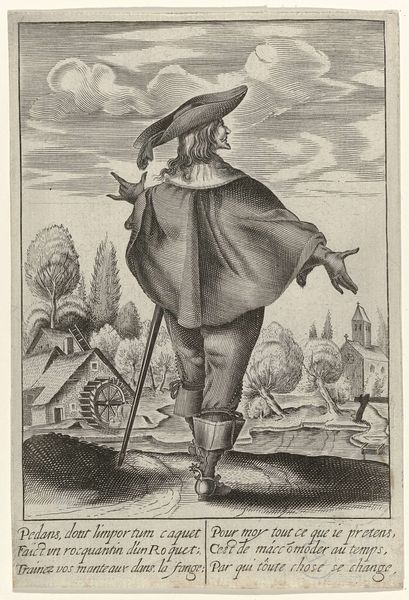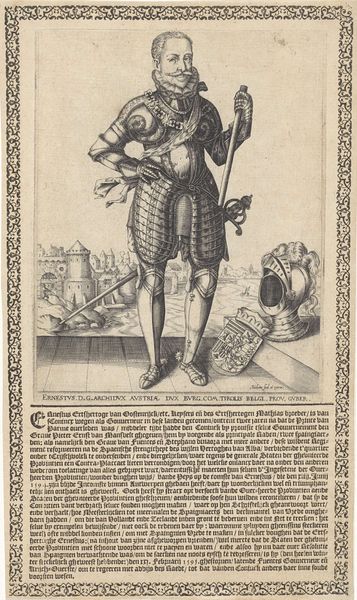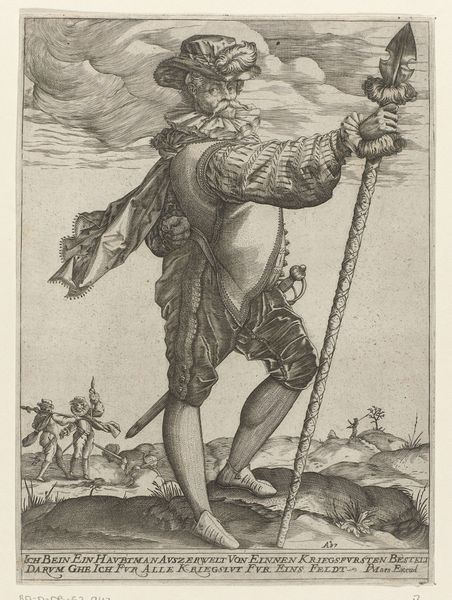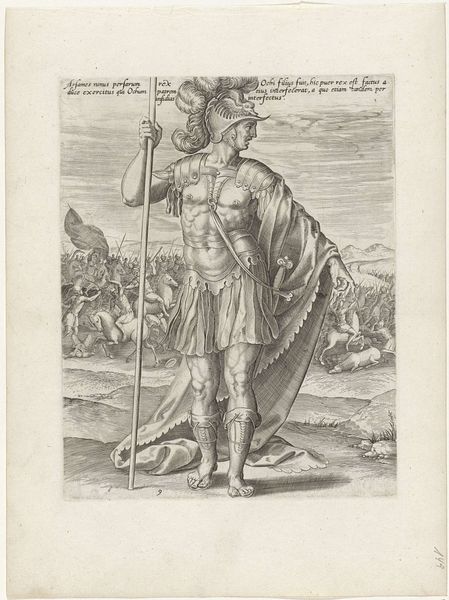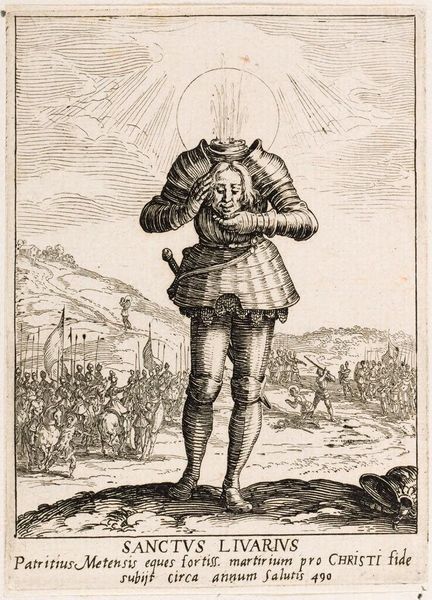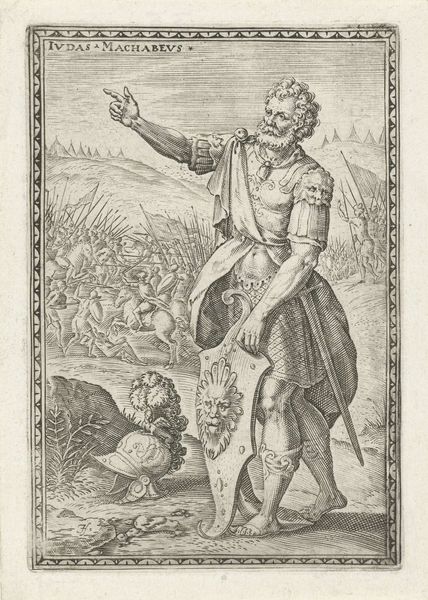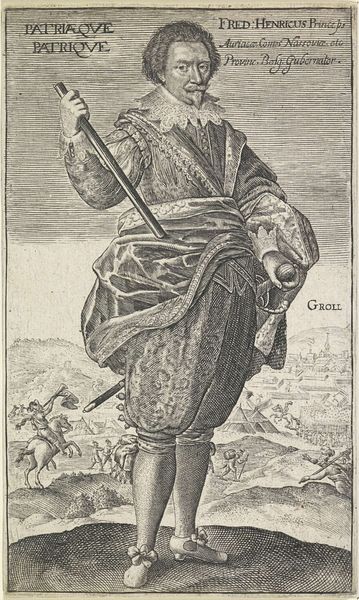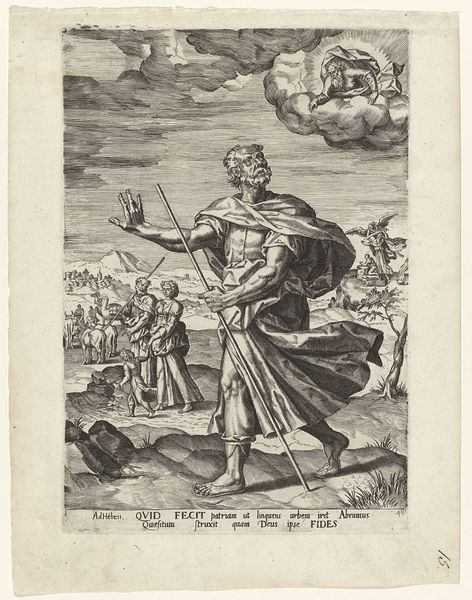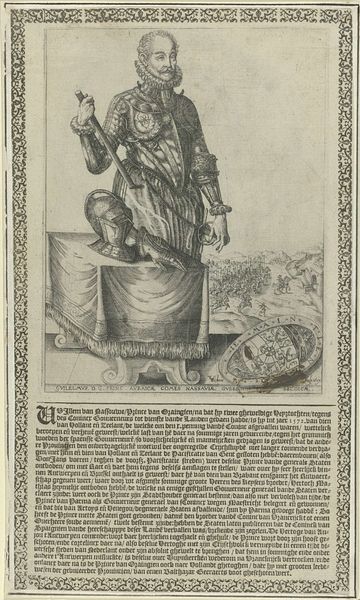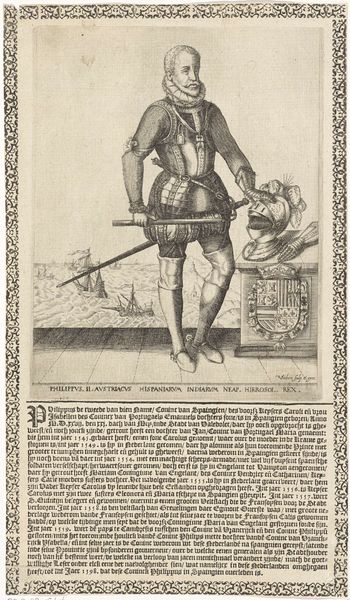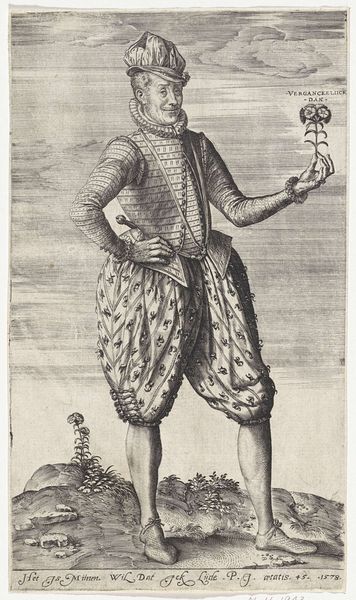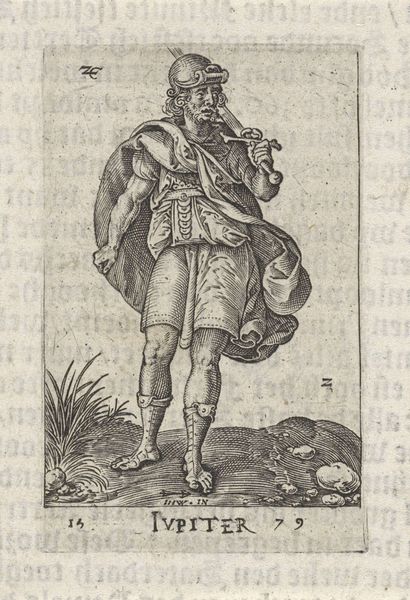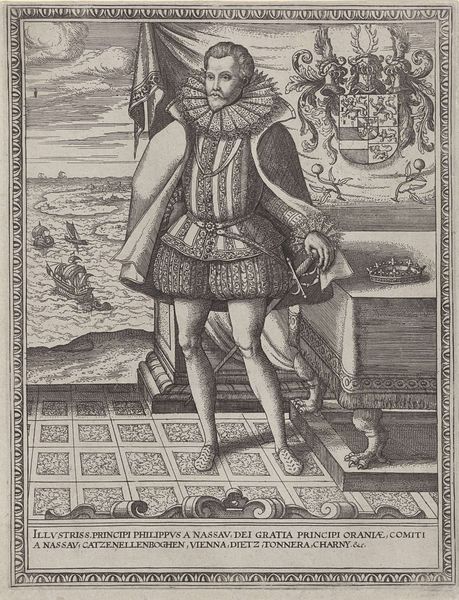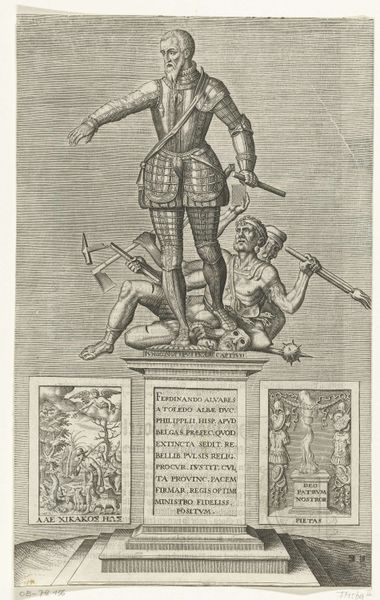
print, engraving
#
portrait
#
baroque
# print
#
history-painting
#
engraving
Dimensions: height 286 mm, width 173 mm
Copyright: Rijks Museum: Open Domain
Editor: Here we have Willem van Swanenburg's "Portrait of Maurits, Prince of Orange," dating from 1600 to 1602. It’s an engraving, currently held at the Rijksmuseum. What strikes me immediately is the sheer amount of detail, contrasting textures in the armor and the backdrop—it gives a real sense of the period. How do you approach this image? Curator: From a materialist perspective, the print's value lies in understanding the production and circulation of power. Think about the process: engraving is laborious. The artist meticulously carves lines into a metal plate, a process driven by economic demands to disseminate the prince’s image. How does this reproductive process impact the portrayal of Maurits himself? Editor: So, it’s less about capturing a likeness and more about... mass-producing an idea? Curator: Precisely. The act of engraving transforms Maurits into a commodity, a symbol manufactured for consumption. The background battle scene is miniaturized, almost ornamental. Do you notice how it reduces the brutal realities of war to a decorative backdrop, reinforcing the Prince's controlled narrative? Editor: That's a stark contrast to the idealized portrayal. Almost like propaganda, intended to manufacture consent…or maybe a national hero? Curator: Perhaps. Now think about the socioeconomic context. Who would buy this print? What function did it serve in solidifying Maurits’s power and the Dutch Republic’s burgeoning identity through accessible artwork? Editor: I hadn't considered it that way. Focusing on the actual making of the piece highlights how art in itself functions almost as political propaganda. Thank you, that definitely changed my view!
Comments
No comments
Be the first to comment and join the conversation on the ultimate creative platform.
